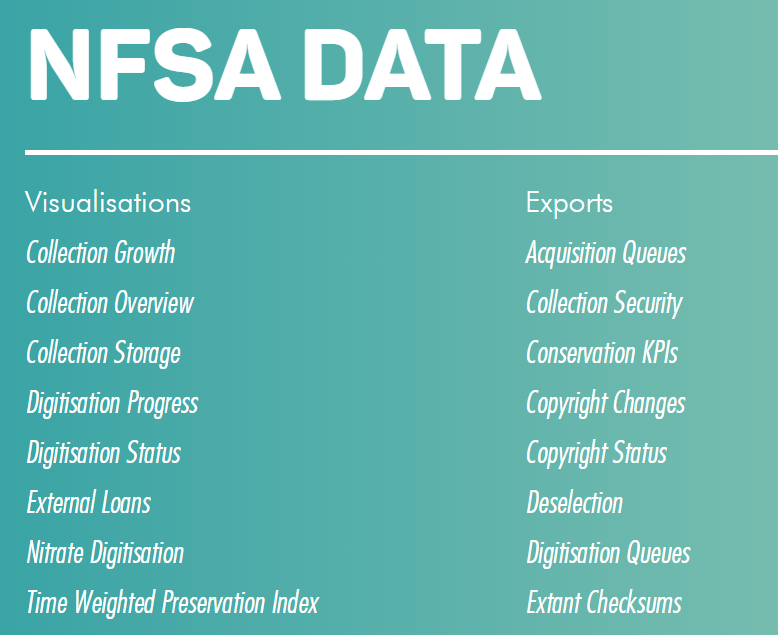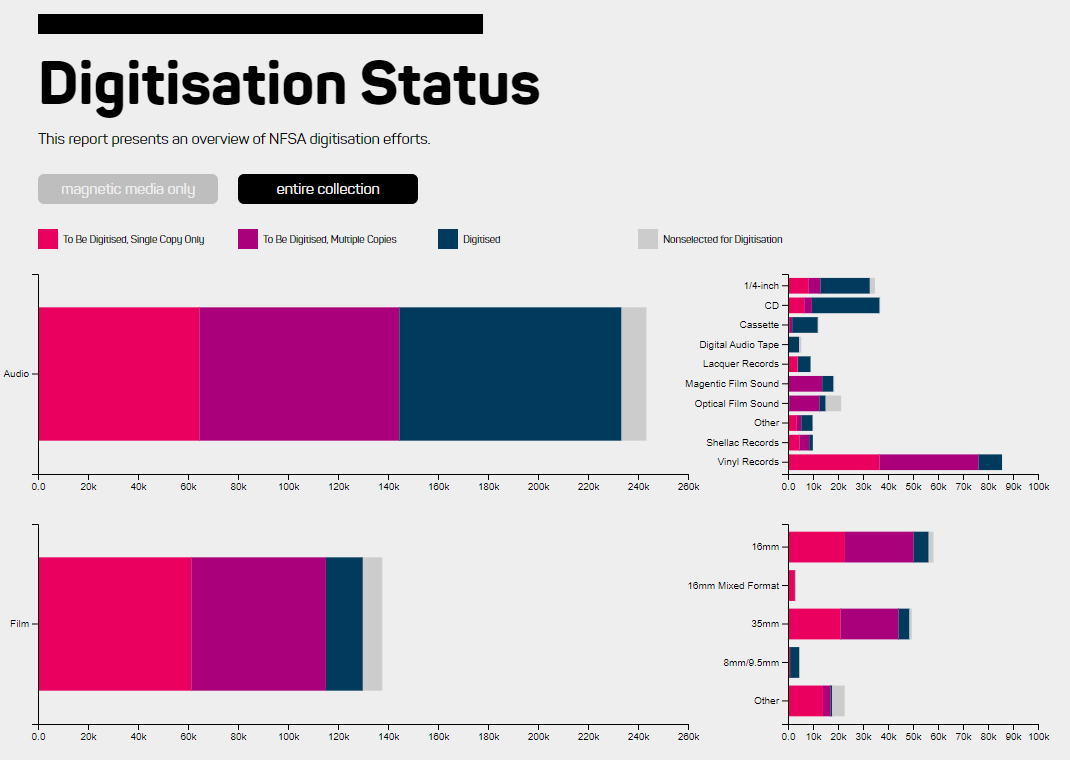Lauren Curless is the Data Integrity, Analytics & Information Management Manager at National Film and Sound Archive of Australia.
As an audio-visual archive, the NFSA has always been interested in storytelling. Australian culture is showcased in every item held in our collection, across a huge number of formats, in the stories of Australians from all walks of life. We’re in a unique position amongst cultural institutions, our collection is primed for digital preservation due to the nature of our content and existing curatorial, digitisation and access programmes.
When we began to look at data science a couple of years ago, it was with this storytelling framework in mind. Using large datasets, we could provide insights into our collection and offer different perspectives. And the ready availability of technology to assist in the transformation of big data into consumable and relatable content is significant. I’ve seen some ingenious visualisations that inspire curiosity and creativity, with practical applications ranging from transport to health to environmental trends. So, it makes sense that data analytics and visualisations would have applications for digital preservation practices too.
Back in 2020, the NFSA decided to capitalise on the wealth of data in our collections and created a Data Analytics function. This team was tasked with mining our collection and corporate systems and using that data to streamline all sorts of business functions, providing insights into our collection and inspiring the use and interpretation of our collection in new ways. The small team of two (of which I was one) were given free rein to investigate analytics functions that could help to streamline digital preservation practices and support improved digital preservation outcomes. We have 3.6 million items in our collection (and growing), plus data available across a range of corporate systems, so we weren’t short on data to experiment with.
What resulted over the next twelve months was the creation of a web-based analytics portal which showcased our collection through data in new and thought-provoking ways. We worked with our colleagues in the curatorial and digitisation teams to create an algorithm that would prioritise analogue material for digitisation based on identified factors; we surfaced gaps in digital integrity processes and discussed the creation of a standard metadata framework for digital items, ensuring consistency for discovery and preservation practices.
Image 1: NFSA's Data Anaytics Portal
We helped to create verification tools for newly created digital records and provided a range of reporting tools for the organisation which supports the archive’s strategic vision. We’re helping to build a fully digital delivery pathway for born digital material and we’ve started analysing the digital collection to establish better ongoing digital preservation practices, such as creating our own list of endangered codecs in the collection (thanks DPC BitList for the inspo).
We’ve created some interesting visualisations that have showcased our huge collection in more digestible ways. One of my favourites is an external loans visualisation that we’ve informally called ‘Where in the world is the NFSA’ which uses geolocation data from Google to map the location of items out on loan across the world. A nice way to visually represent where our collection travels.
Image 2: NFSA's external loans data visualisation
Our Digitisation Status page provides a visualisation of the collection by format and digitisation status. This is important for our at-risk magnetic media collection that we are digitising with priority before the predicted 2025 deadline when we may lose this material. This is something we can repurpose and use to create a Digital Preservation Status page, which would provide ongoing support for the digital collection and help to identify and carry out ongoing preservation activities that ensure continued access and preservation.
Image 3: NFSA's digitisation status data visualisation
We’re only two years into this new endeavour and we now recognise how important our data is to make informed decisions and implement evidence-based practice. There are several exciting ICT infrastructure projects underway which will allow the NFSA to exponentially increase our acquisition, discovery, digitisation, and preservation practices, all of which will require strong data frameworks to streamline workflows, provide accurate reporting and continue to implement new digital preservation practices.
In addition to this, the Australian Government has recently awarded the NFSA $41.9 million to modernise our digital collection infrastructure, build a new data centre, upgrade digitisation suites, and digitise not only our material but the AV material of eleven other national collecting institutions. It’s an exciting time to be working in this space and data will play a key role in all these endeavours.










































































































































